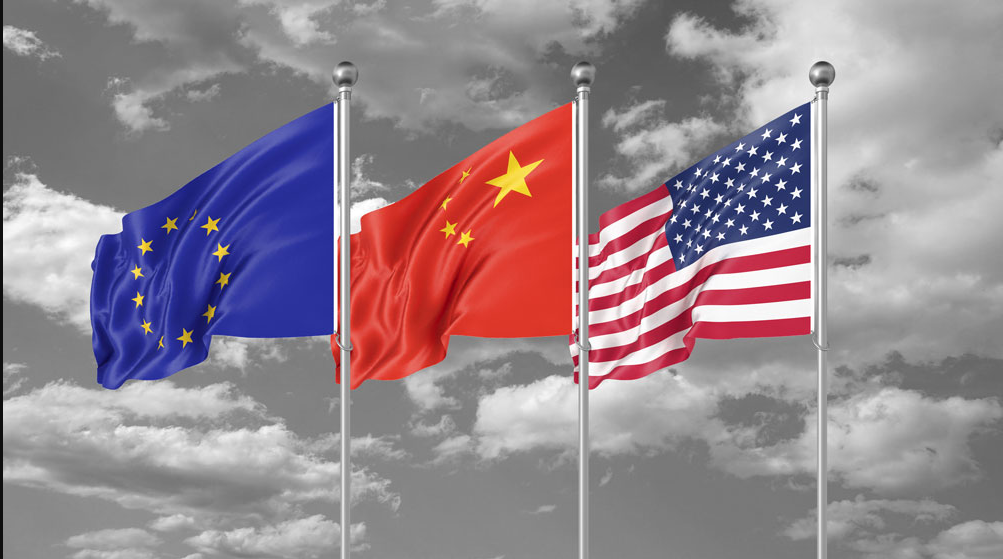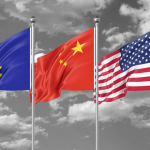The Truce That Shook the World
At the end of October 2025, US President Donald Trump and Chinese President Xi Jinping announced a temporary truce in their ongoing trade conflict. While media headlines portrayed this as a breakthrough, the reality is far more nuanced—and potentially alarming—for Europe.
The truce included delaying the implementation of Chinese export controls on critical raw materials, including rare earth elements, and easing certain US tariffs. On paper, this provides a moment of relief for global markets. However, it does not eliminate the structural risks posed by Europe’s heavy economic dependence on China.
Europe has long relied on Chinese supply chains for semiconductors, advanced electronics, rare earths, and chemical inputs. Over the past decade, repeated crises—ranging from COVID-19 disruptions to Beijing’s targeted export restrictions—have exposed vulnerabilities in European manufacturing and technology sectors. The Trump–Xi truce is not a permanent solution; it is a pause in an ongoing economic conflict.
Key question: Will Europe use this window to finally reduce its dependence on China, or will it continue to gamble on temporary relief?
Europe’s Dependence on China — Risks Accumulated
Europe’s reliance on China has grown steadily across multiple industries:
- Rare Earth Elements and Advanced Materials
Germany and France import a large proportion of gallium, germanium, antimony, and other critical materials from China. In April 2025, Chinese export restrictions caused temporary production halts in the automotive and electronics sectors. Henkel, the German adhesives manufacturer, invoked “force majeure” due to supply shortages, demonstrating the fragility of European reliance on Chinese raw materials. - Semiconductors and Technology Supply Chains
Chinese-owned chip manufacturers, such as Nexperia in the Netherlands, are integral suppliers to European tech and automotive industries. Restrictions or political interference can disrupt production at short notice. A single licensing requirement or delay can stall assembly lines in multiple countries. - Strategic Vulnerability in Defense and Critical Infrastructure
Export controls or supply bottlenecks for materials such as rare earth magnets or high-performance semiconductors can affect European defense production, including aerospace and naval systems. Dependency here is not just economic—it has national security implications.
The pattern is clear: Europe experiences repeated shocks but rarely implements systemic measures to reduce risk. Temporary pauses, like the current Trump–Xi truce, provide a brief respite but do not change the underlying exposure.
The Trump–Xi Truce — Relief or Illusion?
The October 2025 truce includes two main components:
- Suspension of certain Chinese export controls for one year. While this prevents immediate supply shocks, it does not remove China’s ability to reimpose restrictions. Beijing retains full leverage.
- Partial rollback of US tariffs. This reduces pressure on global trade but is contingent on political will in Washington and Beijing.
Experts warn that China’s new licensing system requires European companies to provide sensitive data to secure access to rare earths. This reinforces dependence rather than mitigating risk. From a geopolitical standpoint, Europe remains exposed to the strategic priorities of two rival superpowers—both of which act primarily in their own interests.
In short, the truce is a temporary pause, not a permanent solution. Europe’s fate will depend on whether it acts decisively during this window.
Strategic Options for Europe
To truly de-risk from China, Europe must implement a combination of industrial, financial, and political measures:
- Diversification of Supply Chains
Establish partnerships with Australia, Malaysia, Brazil, and African nations for rare earths and advanced materials. Reduce dependency on a single supplier. - Domestic Production and Recycling
Invest in domestic refining, processing, and recycling of critical materials. Strategic stockpiles should be created to buffer against sudden export restrictions. - Strategic Sourcing and Multi-Supplier Models
Replace “just-in-time” supply chains with multiple sourcing strategies. Companies should secure at least two or three alternative suppliers for high-risk components. - Regulatory Measures and Industrial Policy
Europe can introduce minimum content requirements, incentivize local production, and develop industrial clusters independent of China. These policies would strengthen European sovereignty and reduce strategic vulnerability.






